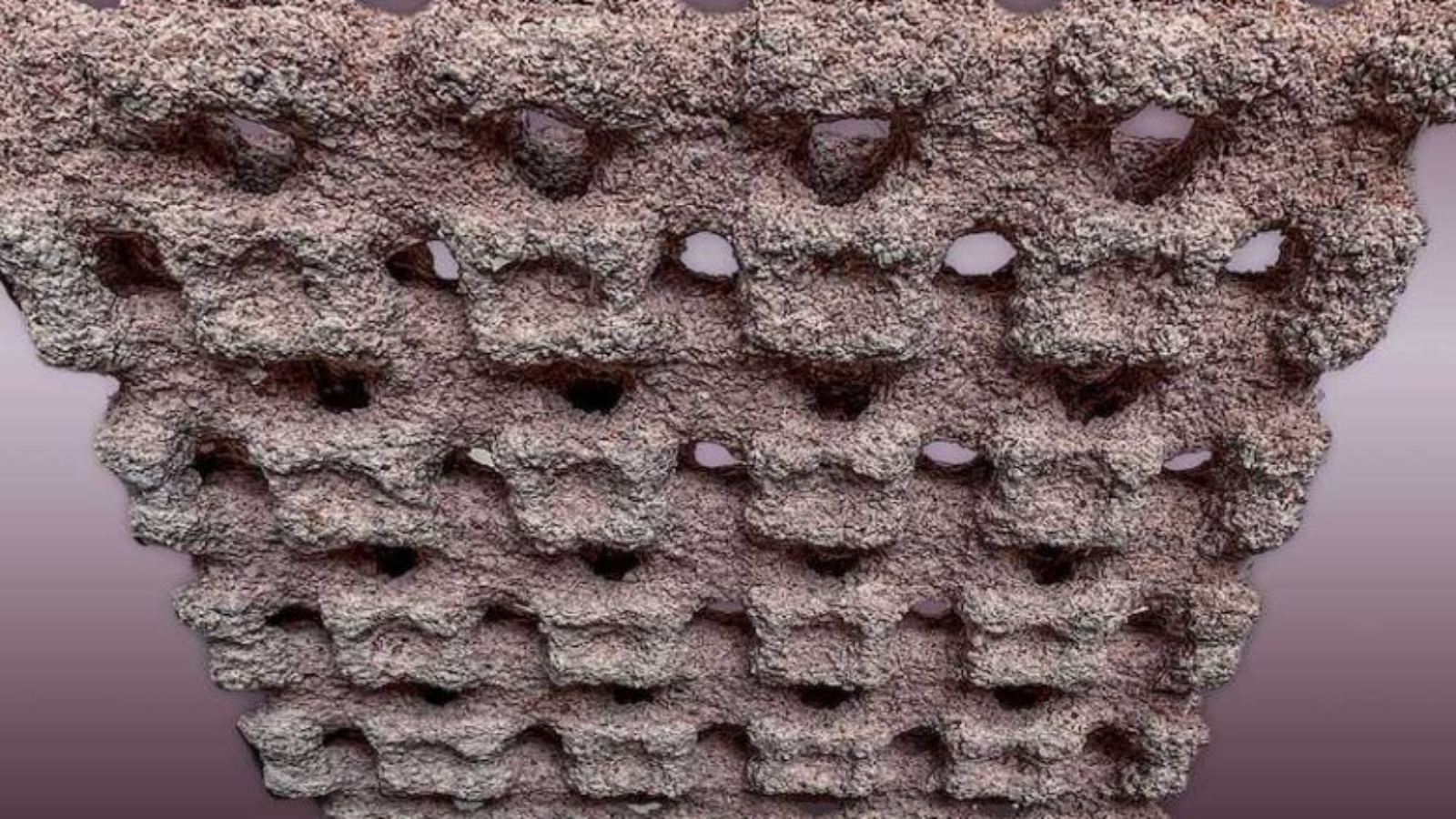A team of civil engineers and architects from ETH Zurich is developing a sustainable dehumidification solution that could reduce the energy consumption involved in ventilating office buildings, museums and other high-traffic spaces. Instead of just relying on mechanical ventilation systems, the team has created a hygroscopic 3D printed material that can store moisture and later release it. The material in question is based on a geopolymer derived from marble quarry waste.
The idea driving the researchers is to establish more passive dehumidification solutions that, unlike mechanical ventilation systems, do not increase energy costs and consumption. The solution they propose is a geopolymer material 3D printed into structures that can be installed in ceilings and walls, where they temporarily absorb moisture from the air, and then release the moisture when the room is ventilated. In other words, the 3D printed geopolymer could be a good candidate for buildings that already have a ventilation system and are looking to reduce their reliance on it.
As Guillaume Habert, Professor for Sustainable Construction and supervisor of the research project, specifies: “Our solution is suitable for high-traffic spaces for which the ventilation systems already in place are insufficient.”
With sustainability being a priority, the researchers looked to byproducts and waste materials for their solution. In the end, they chose to work with waste from marble quarries, which has hygroscopic properties. In order to turn the marble production byproduct into a printable material, the team both ground it down into a fine powder and combined it with an alkaline solution, which acts as a binder for the geopolymer material. The resulting material bears similar properties to cement but is far less energy intensive to produce.
Manufacturing on Demand

At this stage in the research project, the ETH Zurich team has successfully 3D printed a small prototype, measuring 20 x 20 x 4 cm using a binder jet technology. The 3D printing process, carried out by a group led by Benjamin Dillenburger, Professor for Digital Building Technologies, leveraged a mobile jet print head to selectively deposit a potassium silicate binder onto layers of the geopolymer powder. In fact, the binder jetting system used in the project was actually developed by one of the project’s supervisors, architect Pietro Ogaglia. Notably, this isn’t the first time that ETH Zurich researchers have experimented with 3D printed marble-based geopolymers: in 2023 we covered a story about how rock flour was used to 3D print a series of stunning architectural floor elements.
To test the effectiveness of the 3D printed material, the ETH Zurich team conducted a simulation that was based on a library reading room used by 15 people. In this simulation, the researchers wanted to evaluate the impacts of completely lining the ceiling and walls with the 3D printed components to determine the discomfort index, which indicates the “loss of comfort” caused by high or low humidity. The simulation ultimately found that with components 4 cm thick, the discomfort index could be reduced by 75% compared to normal walls, while a 5cm-thick covering could decrease it as much as 85%.
“We were able to demonstrate with numerical simulations that the building components can significantly reduce humidity in heavily used indoor spaces,” summed up Magda Posani, a building physicist who led the study on the geopolymer’s moisture-absorbing properties.
Since the wall components dehumidify passively, they can also have a positive impact on the climate, reducing energy consumption and emissions associated with mechanical ventilation systems—an appealing characteristic, particularly for buildings and organizations looking to achieve net zero targets. The next steps for the promising research initiative will be to further develop the dehumidifying solution and scale it for industrial production.
You might also like:
Researchers patent bendable concrete for 3D printing: Traditional construction relies on people operating heavy machinery to place steel or wood beams to create a building frame, but the process can be dangerous and expensive. This is just one of the material and manufacturing problems Maryam Hojati, assistant professor in the Gerald May Department of Civil, Construction, and Environmental Engineering, hopes to solve.
* This article is reprinted from 3D Printing Media Network. If you are involved in infringement, please contact us to delete it.
Author: Tess Boissonneault


Leave A Comment